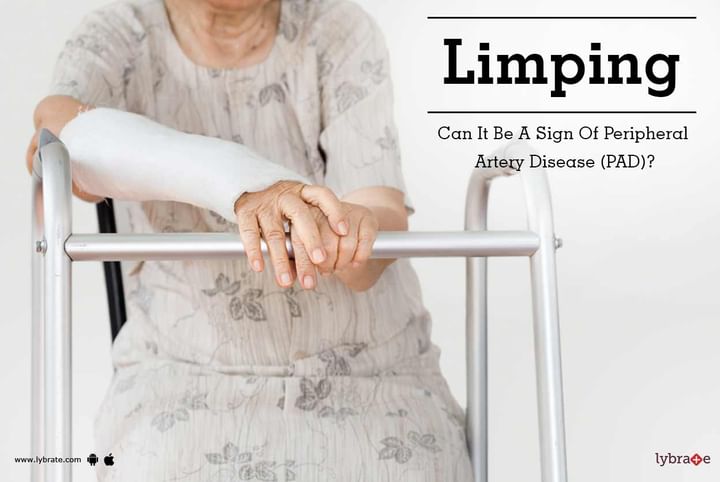Limping - Can It Be A Sign Of Peripheral Artery Disease (PAD)?
Claudication is commonly known as limping. It is one of the many significant indications of Peripheral Artery Disease (PAD). It can also happen to patients having vascular problems like aneurysms. Claudication is generally a painful and uneasy sensation in a set of muscles of the limbs, thighs, or backsides. The pain is usually increased by movement and calmed with rest.
Causes
Peripheral Artery Disease (PAD) is the result of atherosclerosis, the inurement of arteries from the build-up of cholesterol plaques that collect on the internal coating of the arteries. This is common at splitting points of the arteries in the limbs. Obstruction of the arteries from these plaques result in reduced flow of blood to the leg muscles. This could be a problem when moving or working out, the muscles in the limbs need increased blood flow in order to upsurge the oxygen to the blood cells. Atherosclerotic plaques result in reduced blood flow and diminished oxygen. Due to this, the leg muscles often end up aching and burning due to insufficient presence of oxygen. This pain is often felt as cramps to the patient.
Symptoms
Pain in the limbs is the key indicator of claudication. Aching can be shrill or dull, aching or accompanied by soreness or burning. The extent of the Peripheral Artery Disease, the position of the plaque, plus the action of the leg muscles (walking or exercising or resting) control the harshness of symptoms and place of discomfort or agony.
Severe pain in the calf region is the typical place for cramps. This is because atherosclerotic plaques usually start out in the arteries furthest from the cardiac muscle. If the obstruction or formation of plaque is way up the leg, the agony from claudication could be felt in the thigh area. If the issue is in the aorta, symptoms can include pain in the bottoms or groin area.
Treatment
Treating Claudication includes remedial therapy. These therapy sessions may or may not involve revascularization or angioplasty. Patients with claudication are given medical treatment aimed at reducing the pain. However, reduction of risk issues, physical activity, and using medicines that could improve the possible distance a patient could walk, is the chief aim of treatment.
Debilitating claudication that stops patients from working or living a regular life usually finds a resort in revascularization measures. These procedures comprise of percutaneous angioplasty and a surgical method that circumvents the blockage. Stenting of the congested vessels is also an option. However, now there are plenty of medications that can help in reducing its symptoms and assist the patient in being freely mobile.
Victims of claudication can take care of their pain with prescribed exercises and fitness schemes.
In case you have a concern or query you can always consult an expert & get answers to your questions!



+1.svg)
